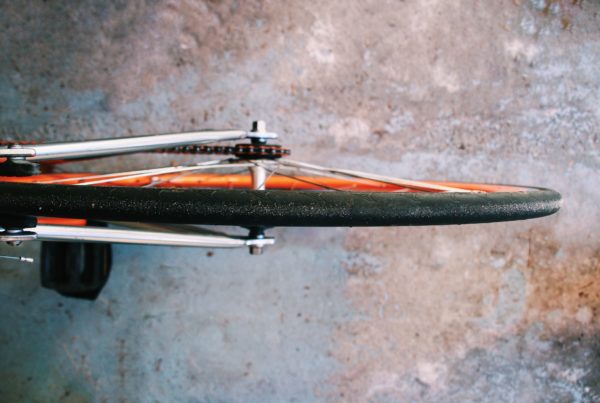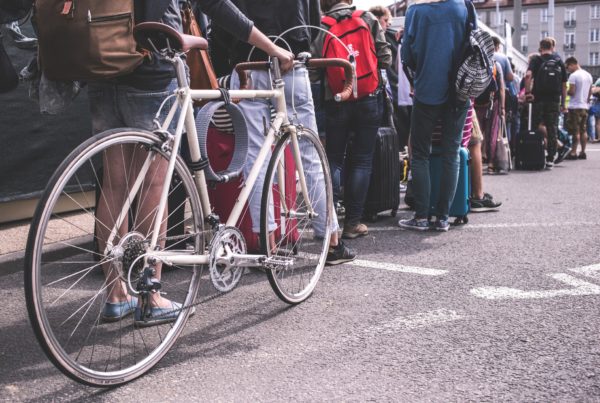This article was first published in the July 2017 issue of Plaintiff magazine (plaintiffmagazine.com).
There’s a social-media world you need to know about
The lawyer sat listening to a new client. The client, a cyclist struck by a car, explained the incident. “I know I was doing 25 because I had Strava running.”
“Understood,” said the lawyer, “Did you upload the ride after the collision?”
“Of course,” said the cyclist, “If it’s not on Strava, it didn’t happen.”
What is Strava?
Strava is the most successful among various activity-sharing applications. Others include My Garmin and Map My Ride. For ease in this column, I’m using the term Strava for all such apps – like Kleenex for tissue. The idea is somewhat simple. One uses a GPS-enabled device – an iPhone or bicycle computer – while biking, hiking, running, or walking. Again, for ease, I’m going to use cyclist as a stand-in for all activities. The ride is recorded on the device. At the conclusion, the ride is uploaded to Strava.
The application allows users to look at activities overlaid on a map. Users also create segments. For example, Old La Honda Road in Woodside, California. Riders can compare their segment times against every other Strava rider who has ridden the stretch. The fastest riders gain the King or Queen of the Mountain title. One can also “follow” other riders, view a feed of their rides, and provide encouragement (or ribbing) through comments on rides.
Strava has developed an immense following. This makes it a powerful tool for bicycle cases.
Global domination
Global positioning systems form the backbone for tracking Strava user movements. GPS has limits, however. Two riders taking the exact same route may get significant differences in elevation measurements. Strava works by sampling location data frequently – but not continuously. Strava engineers consider their GPS data accurate to roughly 50 feet. This means pinpoint accuracy for an accident reconstructionist or biomechanist is not available. For example, it will not accurately provide the exact speed at impact versus whether the bike had slowed due to braking before. The data tells us generally how fast one was going, where one was going, when, and who else may have been around.
Flybys
Wait, what? Who else might have been around? Yep. Strava has Flyby, a beta application. It lets one see other Strava users a rider “flew by” during a ride, so long as the Strava user uploads the activity. The flyby tool is a great way to find bicycle-friendly witnesses to an incident, say that rider who stopped to render first aid and then left before statements were taken, thinking it was obvious what happened.
Live by the Strava, die by the Strava
Strava is not always helpful, however. Riders frequently upload the collision ride. A client should be directed to make the ride (and potentially the rider’s other activities) private in the privacy settings. Deleting the data (or advising the client that having the data “would not be good for the case”) doesn’t help. Evidentiary sanctions are likely, as is State Bar discipline.
Heatmaps
Strava also has a Heatmap tool. This allows one to look at a map and see where riders have chosen to ride. The datasets are already having impacts on road use. A recent debate over a Caltrans idea to close cyclist access on the Highway 1/Highway 35 interchange was influenced by this data. Traffic engineers ignore the data at their peril. It will play a part in roadway cases.
Damaged?
Strava information can also help influence damages. A rider rode 6,500 miles the year before a collision? Pretty good evidence that riding played a major role in that rider’s life. A rider who, hypothetically, did that may have been in the saddle over 700 hours that year. That’s 29 days. (The hypothetical rider is fortunate half that time was spent on a cargo bike with his kids.) If that rider was unable to ride ever again, or had to dramatically cut back on riding and commuting, a jury would likely comprehend that loss.
Going fast in traffic?
As creative plaintiffs’ lawyers process the Strava concept, it is likely hard to resist thinking of Strava as a potential secondary target. Can an entity like Strava be held legally responsible for inducing people to go dangerously fast when competing for segment domination? This issue was tested in a death case following a back-and-forth for a King of the Mountain title on a Berkeley descent. The court granted Strava’s summary judgment. Strava also made several changes, including encouraging riders to flag potentially dangerous segments for removal. For example, one cannot create a segment for the (usually very crowded) Golden Gate Bridge bike path.
Outro
Back to our lawyer, meeting with the Strava-happy client. The ride was marked as private and the client was given some education about social media and litigation. The rider’s extensive Strava history helped illustrate the damage in the case, leading to a successful settlement down the road.




